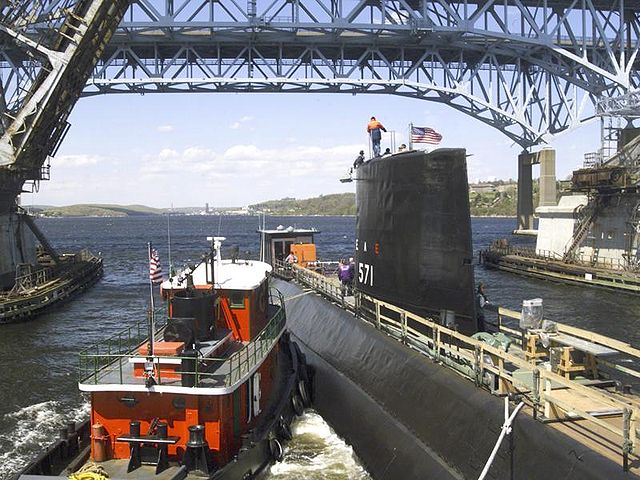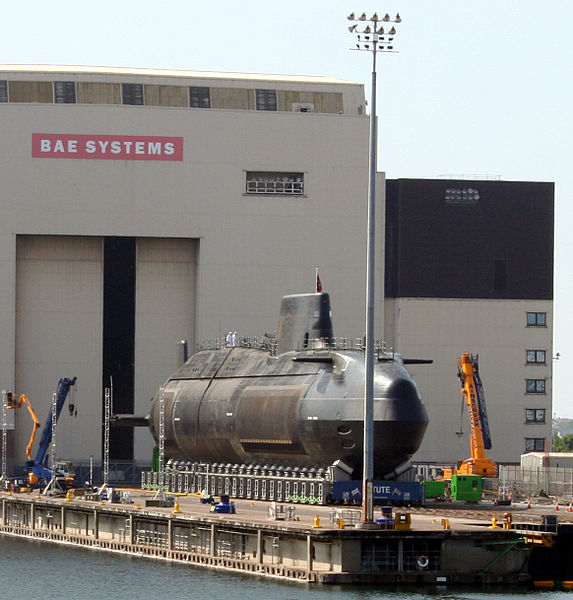USS Nautilus (SSN-571) was the world's first operational nuclear-powered submarine and the first submarine to complete a submerged transit of the North Pole on 3 August 1958. Her initial commanding officer was Eugene "Dennis" Wilkinson, a widely respected naval officer who set the stage for many of the protocols of today's Nuclear Navy of the US, and who had a storied career during military service and afterwards.
The retired USS Nautilus heads home on 8 May 2002, after preservation by the Electric Boat Division
USS Nautilus docked at the Submarine Force Library and Museum
Admiral Hyman G. Rickover aboard the Nautilus
Launching Nautilus
A nuclear submarine is a submarine powered by a nuclear reactor, but not necessarily nuclear-armed. Nuclear submarines have considerable performance advantages over "conventional" submarines. Nuclear propulsion, being completely independent of air, frees the submarine from the need to surface frequently, as is necessary for conventional submarines. The large amount of power generated by a nuclear reactor allows nuclear submarines to operate at high speed for long periods, and the long interval between refuelings grants a range virtually unlimited, making the only limits on voyage times being imposed by such factors as the need to restock food or other consumables.
British Astute-class submarine
USS Nautilus, the first nuclear-powered submarine.
The smallest nuclear-powered submarine, the U.S. Navy's NR-1.
The nuclear-powered VMF Typhoon-class submarines were the world's largest-displacement submarines.








